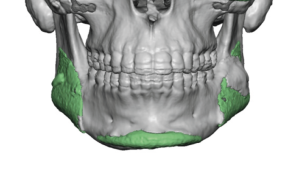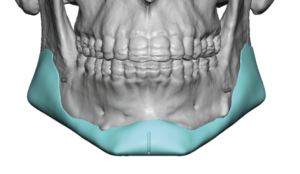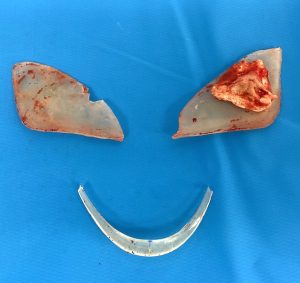Background: The historic and still commonly performed method of lower jaw augmentation is with the use of standard chin and jaw angle implants. Three in dependently placed implants on the bony corners of the lower face can effectively create a more visible or defined jawline. Barring any complications many implanted patients go on to live with their jaw implants forever. But some patients, even with initially satisfying results, may eventually think about improvements and the consideration of a connected jawline implant that provides increased dimensions is the only option moving forward.
All connected jawline implants are custom designed from a. 3D CT scan. From the scan the existing implants can be seen with their shapes and position on the bone. (unless it is Medpor material which can’t be seen) Often changes of the bone around the implant will be seen consisting of varying amounts of overgrowth. While this is well known to occur around chin implants, it is not usually appreciated that it occurs around jaw angle implants as well. This biologic response is to be expected since the implants are placed in the subperiosteal location.
When replacing jaw implants it is always necessary to remove these bone overgrowths. For some of them it is necessary to remove them to get the implants out. But for all of them they need to be removed/smoothed out so the new implant lies as flat as possible on the jawbone.
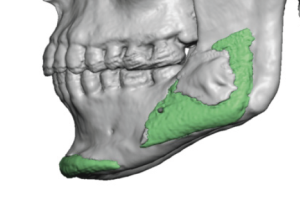
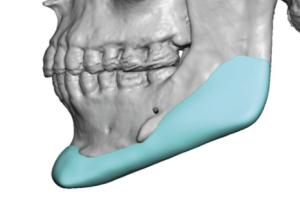
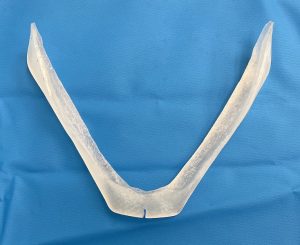
When it come to replacing existing jaw implants with new ones this secondary surgery is always harder than the placement of the first implants where no such biologic tissue reactions have developed. The combination of scar (capsule) and bone overgrowths makes the dissection more difficult. The key is to go get under the existing capsule and lift it off the bone and push it outward. (capsular displacement) There is very little working room to try and remove get capsule due to the small incisional work space. This will also provide a clear view of any residual bone overgrowths that need to be removed.
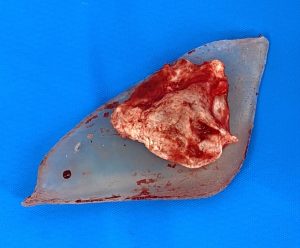
Case Highlights:
1) Some standard chin and jaw angle implants patients ‘graduate’ to a custom jawline implant for an enhanced and linear jawline look.
2) While chin implants are well known to develop varying amounts of thin edge bony overgrowths, jaw angle implants can develop much more profound bony overgrowths over their superior edges.
3) Replacing existing chin and jaw angle implants with a total coverage jawline implant requires removal of all bony overgrowths and elevation of the existing capsule.
Dr. Barry Eppley
Indianapolis, Indiana



